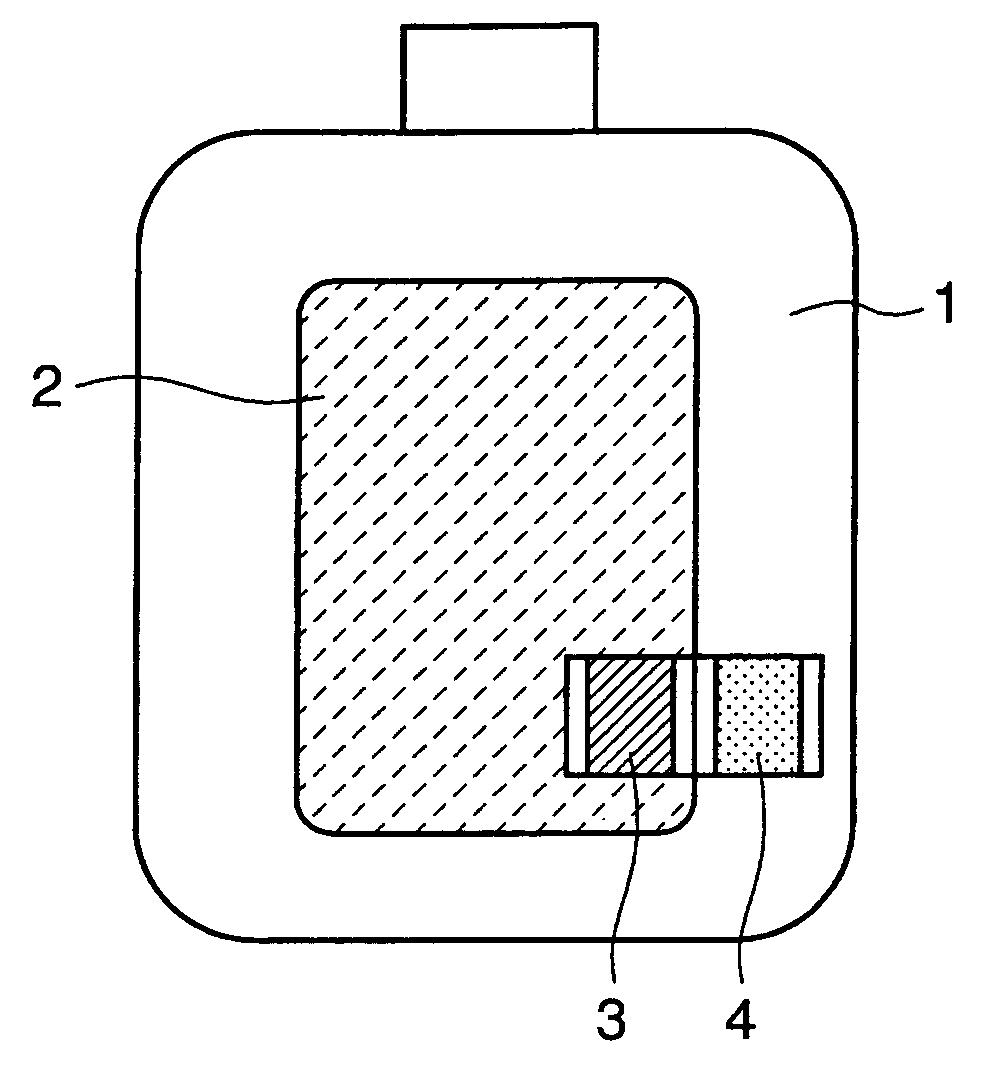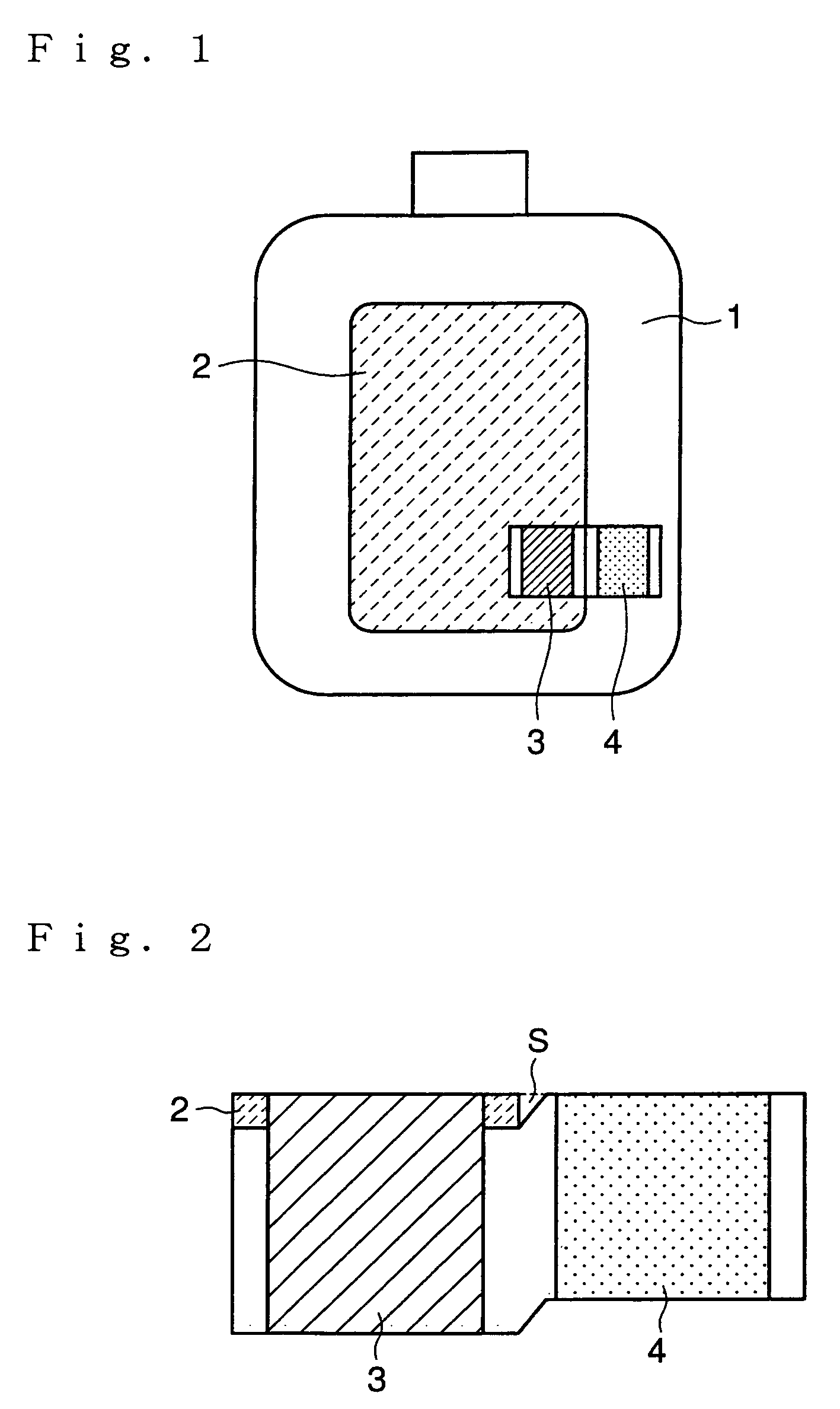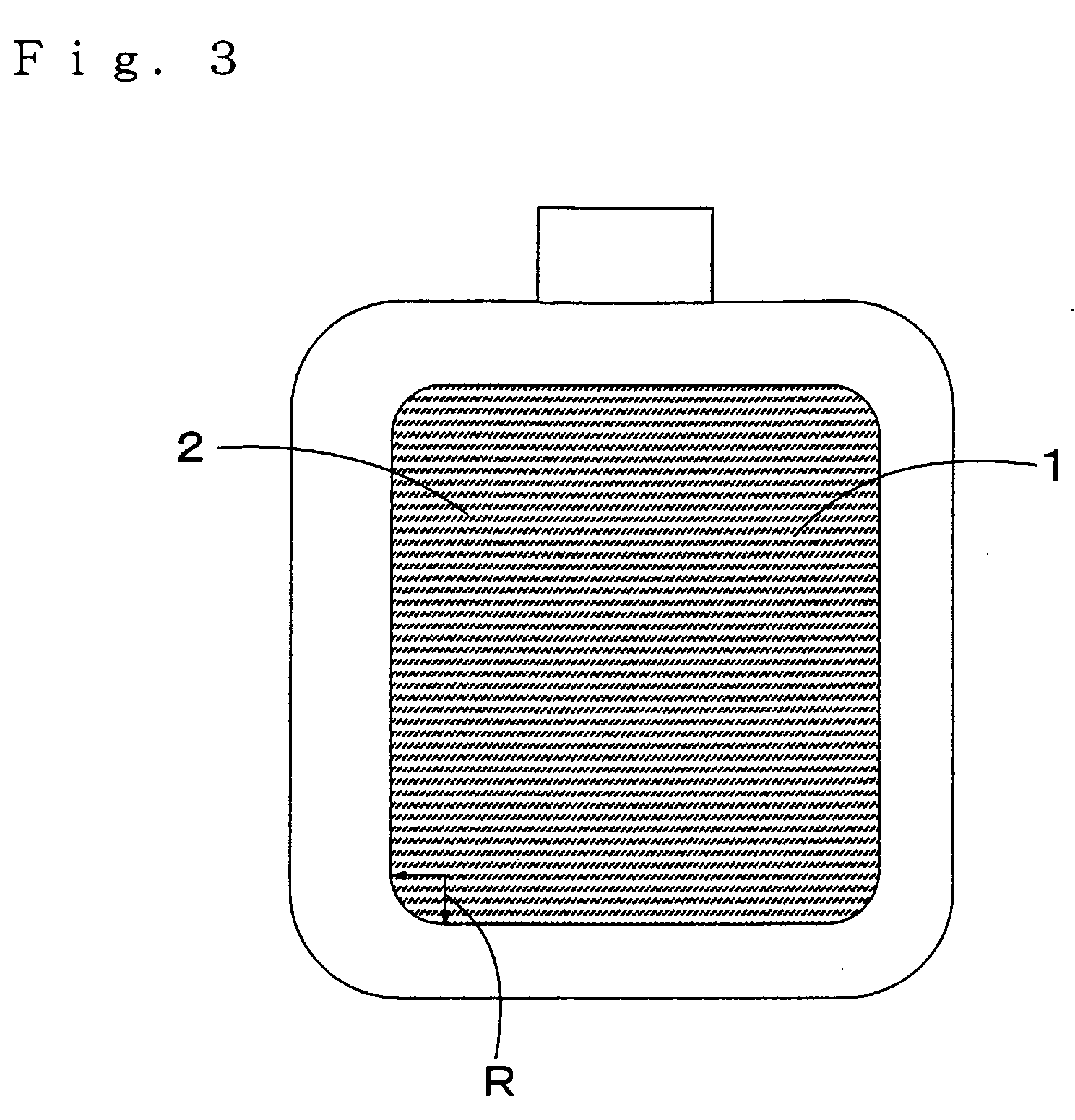Labeled resin container
a label-surrounded and resin-based technology, applied in the field of label-surrounded containers, can solve the problems of low impact strength of the label-surrounded part, contents may leak out, and the impact strength of the container drop cannot be improved satisfactorily,
- Summary
- Abstract
- Description
- Claims
- Application Information
AI Technical Summary
Benefits of technology
Problems solved by technology
Method used
Image
Examples
production example 1
Production of Label (1)
[0081] A resin composition (A1) comprising 67 parts by weight of propylene homopolymer (Nippon Polypro's Novatec PP “MA-8”; m.p., 164° C.), 10 parts by weight of high-density polyethylene (Nippon Polyethylene's Novatec HD “HJ580”; m.p., 134° C.; density, 0.960 g / cm3) and 23 parts by weight of calcium carbonate powder having a particle size of 1.5 μm (shown in Table 1) was melt-kneaded in an extruder, and sheetwise extruded out through a die at 250° C., and the resulting sheet was cooled to about 50° C. Then, the sheet was again heated at about 150° C., and stretched 4-fold in the machine direction by utilizing the peripheral speed difference between rolls to obtain a monoaxially-stretched film.
[0082] Apart from it, a resin composition (C) comprising 51.5 parts by weight of propylene homopolymer (Nippon Polypro's Novatec PP “MA-3”; m.p., 165° C.), 3.5 parts by weight of high-density polyethylene (HJ580 mentioned above), 42 parts by weight of calcium carbonate...
production example 2
Production of Label (2)
[0087] In the same manner as in the Production Example for the label (1), a four-layered stretched resin film having a density of 0.77 g / cm3 and an overall thickness of 110 μm (C / A1 / C / B=30 μm / 50 μm / 25 μm / 5 μm) was obtained, for which, however, the extrusion rate through the extruders to form the C / A1 laminate was controlled. The film had a porosity of 36%. Its Gurley stiffness was 0.05 m·kgf in the MD-stretched direction and 0.11 m·kgf in the CD-stretched direction. Also in the same manner as in the Production Example for the label (1), this was blanked out to give a label (2).
production example 3
Production of Label (3)
[0088] A resin composition (A1′) comprising 75 parts by weight of propylene homopolymer (Nippon Polypro's Novatec PP “MA-8”; m.p., 164° C.), 10 parts by weight of high-density polyethylene (Nippon Polyethylene's Novatec HD “HJ580”; m.p., 134° C.; density, 0.960 g / cm3) and 15 parts by weight of calcium carbonate powder having a particle size of 1.5 μm (shown in Table 1) was melt-kneaded in an extruder, and sheetwise extruded out through a die at 250° C., and the resulting sheet was cooled to about 50° C. Then, the sheet was again heated at about 158° C., and stretched 4-fold in the machine direction by utilizing the peripheral speed difference between rolls to obtain a monoaxially-stretched film.
[0089] Apart from it, the resin composition (C) was melt-kneaded at 240° C. in a different extruder, and filmwise extruded out through a die onto the surface of the above-mentioned MD-stretched film to laminate the two (C / A1′) to give a laminate structure of surface l...
PUM
| Property | Measurement | Unit |
|---|---|---|
| cross-sectional area | aaaaa | aaaaa |
| volume | aaaaa | aaaaa |
| elongation | aaaaa | aaaaa |
Abstract
Description
Claims
Application Information
 Login to View More
Login to View More - R&D
- Intellectual Property
- Life Sciences
- Materials
- Tech Scout
- Unparalleled Data Quality
- Higher Quality Content
- 60% Fewer Hallucinations
Browse by: Latest US Patents, China's latest patents, Technical Efficacy Thesaurus, Application Domain, Technology Topic, Popular Technical Reports.
© 2025 PatSnap. All rights reserved.Legal|Privacy policy|Modern Slavery Act Transparency Statement|Sitemap|About US| Contact US: help@patsnap.com



